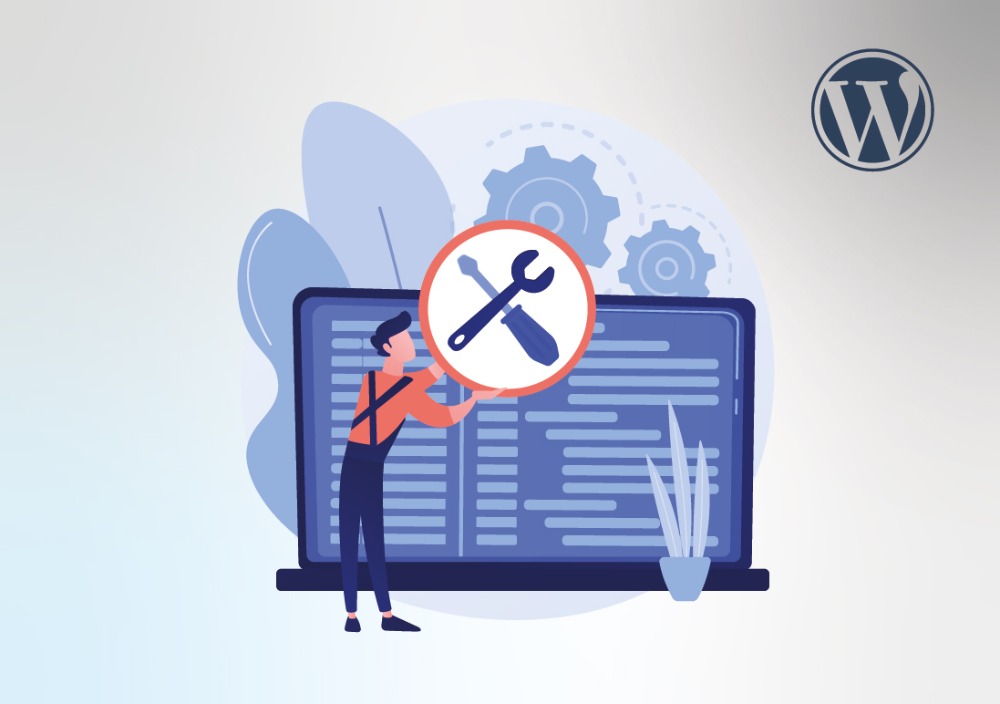A wide variety of premium WordPress themes is one of the main reasons why businesses decide to build their websites using this CMS. The opportunity to pay around $50 instead of spending $3,000-10,000 on custom development seems attractive even for companies that don’t have strict budget limitations. It’s especially easy to be tempted by this option if you consider that most off-the-shelf WordPress themes offer a visually pleasant interface along with some additional functionality. So, when you buy a theme, you basically get a ready-to-use website. Hypothetically.
In practice, everything looks less ideal. There are a lot of WordPress theme problems that affect the website’s functioning and outweigh the benefit of a low price at the end of the day. This article describes the most typical of them and explains what you need to do to mitigate risks if you’ve still decided to go with this choice.
Most common WordPress theme issues
WordPress is an open-source platform. It means that its code is generally accessible, so anyone can create a new theme, either for their own WordPress website or for sale. Naturally, there are thousands of themes available in the market, and all of them are different. Today, we won’t dive into the specifics of separate themes. Our goal is to show you the general problems you may face when opting for a ready-made WordPress theme. So, let’s start.
Complicated customization and code duplications
The first issue programmers have to resolve when using a paid WordPress theme is its customization per the client’s requirements. It’s true that most WordPress themes are customizable, so they allow for a certain level of user adjustments. But if you want to make changes that a theme developer did not anticipate, you’ll have to create custom elements or build the entire child theme.
Simply put, a child theme is an add-on for another WordPress theme (i.e., parent). It inherits the functionality and styling of the latter and cannot be used independently from it. Programmers create child themes to make modifications to the designs offered by their “parents”.
You may wonder why not make changes to a parent theme directly — wouldn’t it be easier? The answer is “no”. When a WordPress theme is updated, its old files are replaced with new ones. Naturally, these new theme files won’t contain your changes, so all of them will be lost. That’s why modifying the code of a parent theme never results in a lasting solution.
To get around this issue, some programmers block the updates of a parent theme for the end-user (i.e., client). At first, this might seem to solve the problem: when there are no updates, you don’t have to worry about losing your adjustments because of them. But, unfortunately, it’s not a working scenario, either. Some updates are critical for a website since they ensure its security, improve its optimization, or extend its capabilities. If these updates are not installed, the website will become more vulnerable to cyber-attacks, and its performance might be affected.
So, creating a child theme is the only right way to customize a WordPress theme if the envisioned adjustments fall outside the scope of changes a theme offers by design. But this option also has its downsides. Not all theme developers build their products with scalability in mind. If this is the case, even minor changes may require copying of a huge part of the parent theme's codebase and modernizing it on the go. Besides, there are practically no tests for checking if the theme works correctly, so no one can guarantee that there will be no glitches, especially when the changes are complex.
Plugins incompatibility and other issues related to plugins
A rich ecosystem of themes and plugins is an undeniable WordPress benefit and a huge WordPress problem at the same time. It allows businesses to extend the site’s functionality. But, on the flip side, it makes compatibility issues a common thing for most WordPress sites. For example, some new plugins that you might want to install on your website can be incompatible with existing theme plugins. If two plugins don’t work well together, some features may function incorrectly or stop functioning at all.
But incompatibility isn’t the only WordPress theme issue related to plugins. Another problem is the inability to get rid of default plugins used by a theme. Suppose a theme uses the WPForms plugin, but you need the Contact Forms 7 plugin because it offers relevant capabilities. If WpForms is essential for a theme to function properly, you won’t be able to delete it. The same applies to additional functionality embedded in your theme that is required for WPForms to work correctly. Since you won’t be able to remove unused code from a system, it’ll remain there, making the site heavier, slower, and harder to maintain.
On top of that, some plugins integrated into a ready-made theme can be hacked or poorly coded, which may lead to system failures or data leakages. When you build a bespoke theme, all these risks are irrelevant because you can develop custom functionality instead of installing third-party plugins.
A WordPress theme doesn’t look like the demo
People usually choose WordPress themes based on what they see in the demo preview. But, often, the previews look different from what you get in practice. And it’s not because theme creators are trying to mislead or deceive users. The matter is that demos are usually shown as fully customized versions of WordPress themes with text and featured images. Basically, they demonstrate the maximum of the theme’s capabilities or, in other words, what you can potentially get if you make the most of its features. So, when you buy a theme, it rarely looks like the demo.
Most WordPress themes are designed as one-size-fits-all solutions targeted at a broad audience with a wide range of needs. That’s why they provide a variety of possibilities to change, set up, delete, and add numerous interface components. It means that you’ll need to do a lot of work before your website looks similar to the theme preview.
Sometimes, it happens that all settings from the demo version are provided by a vendor along with a theme. But there is always the risk that they are not. In this instance, you’ll need to create a website design from scratch, figuring out how to make it similar to a preview along the way. Of course, it’s a less critical problem than those you may experience when WordPress themes are not working as intended, but it can be quite disappointing and time-consuming.
Ineffective tech support
In some cases, WordPress themes don’t have tech support at all. But even if there is someone you can contact to resolve your WordPress theme issue, the process will probably be neither fast nor customer-oriented.
Tech support of most WordPress themes often consists of one person, a theme creator, who has more than one WordPress product in his portfolio. He probably receives dozens of requests to fix the issue from hundreds of users every day. If your problem is solved in a couple of weeks, you may consider it great luck.
But waiting for so long isn’t a good idea since you will be losing traffic and potential customers during this period. So, when you buy a ready-made WordPress theme, it doesn’t mean you won’t need the help of WordPress developers.
Other WordPress theme problems you may experience
In addition to the WordPress theme issue described above, there are a lot of other bumps on the road that can make the usage of a WordPress theme burdensome and costly. Here are the most important of them:
- a theme is incompatible with your hosting
- a theme is outdated, and its updates cause a site to fail
- a theme is hard to optimize or is not optimized for different devices
- a theme has security flaws or is hacked (a common problem for free themes)
- a theme uses a lot of paid plugins (e.g., builders, plugins, fonts) that you have to buy on top of a theme
Due to all these problems, a business can spend more resources on fixing different issues related to the functioning of an out-of-the-box WordPress theme than the custom development would require.
Still, there are some cases when purchasing a premium WordPress theme isn’t a bad idea. Let’s talk about this next.
When it’s reasonable to buy a ready-made WordPress theme
In general, a premium WordPress theme isn’t an awful thing you should avoid at any cost. Sometimes, using them is the most optimal way to meet the project requirements. Here are typical situations when buying a WordPress theme is a reasonable choice:
- your budget is strictly limited, and you need to test an idea
- you need to launch a website in short deadlines (but post-release tweaks and issue-fixing will still take time and money)
- a theme contains all the features you require, so you won’t need to add any extra pieces of functionality to it
If your project meets one of the above conditions, we recommend buying a WordPress theme on this site.
How to minimize risks when buying a WordPress theme
No matter what theme vendor you choose, there are some steps that you can follow to avoid wasting money on a low-quality WordPress theme that will cause you a lot of trouble.
Test how it works on different devices
Ideally, you should test a theme on all your devices. If a WordPress theme is displaying well on them, check it with BrowserStack or BrowserShots, too. These platforms will help you make sure that there won’t be any problems with your theme on various other devices you personally don’t use.
Check the theme’s load speed
Poorly built WordPress themes are loading slowly. You can check the theme’s load speed with the help of Google PageSpeed Insights or Chrome (see the image below). In addition, we recommend checking the site with GTmetrix or Pingdom Tools to get more info on its performance.

Check the date of the last update and update frequency
If the theme isn’t updated, it can be incompatible with the new WordPress features or may contain a lot of unfixed errors. That’s why knowing the date of the last theme’s update and the frequency of its updates is a critical criterion that you have to consider when making a decision.
Pay attention to the number of downloads or purchases
The number of downloads or purchases will show you how popular the theme is. It’s often an indirect indicator that other people successfully use the theme and that you’ll be able to get help if needed.
Read user reviews
That’s pretty obvious. Don’t buy a WordPress theme that has many bad reviews. It’s not like a book that some readers like while some other readers hate. If it’s bad, it’s bad.
Check if a theme uses paid plugins
Many WordPress themes come with paid plugins. And some of them can even lose most of their capabilities if you try to disable these plugins. In some other cases, users have to buy plugins separately, which increases website costs.
Make sure there are no problems with plugins
As mentioned, there can be a lot of problems related to plugins. That’s why you have to make sure that all plugins are secure and reliable. Also, you should check if there is no risk of compatibility issues before installing new plugins.
Check if there is demo content
Demo content will give you a clearer picture of how your site will look like when you add text and images to it, so you know what to expect.
Check documentation and tech support
It’ll be much easier to work with a theme and fix the issues if you have the detailed documentation at hand. It’s essential to check if there is a translation to the language you know. Besides, it would be great if you contact tech support just to make sure that they are ready to address your queries.
Find a developer to check the theme’s scalability
In case you want to make complex changes to a theme, you need to ask a professional developer to review its code. It’s essential to check in advance if your envisioned customization can be implemented in reality.
Don’t use hacked themes
It’s obvious. But, still, we want to emphasize that hacked themes are never a good idea. Most of them never get updates, which causes many problems. They may also contain malware.
Conclusion
The idea of using an off-the-shelf WordPress theme looks great in theory but is troublesome if implemented in practice. It’s often hard to make changes to these themes or avoid code duplications while customizing them per specific business requirements. There can also be a lot of issues with plugins and security. That’s why opting for custom development is a much better and, in many cases, more cost-effective option. Flexi IT provides a wide range of WordPress development services. Contact us, and we’ll help you address any WordPress-related challenge you have.






